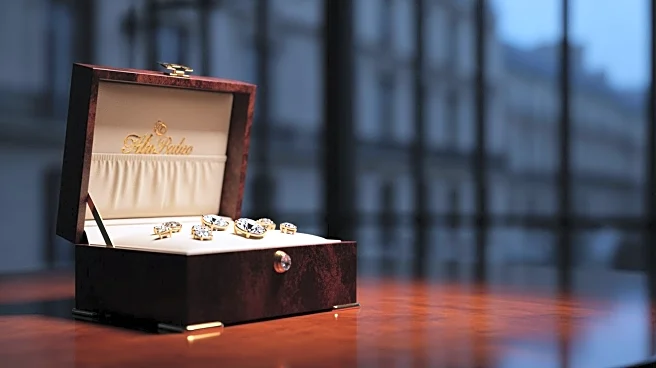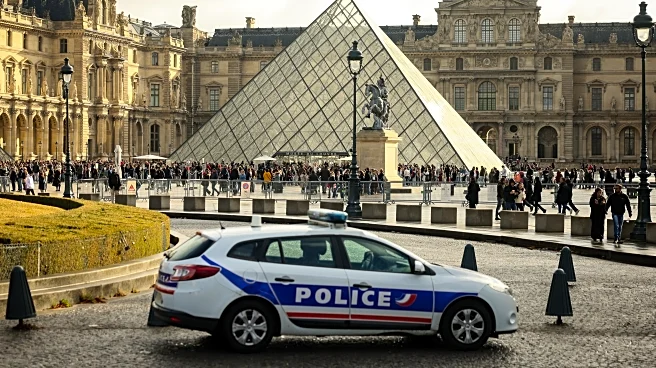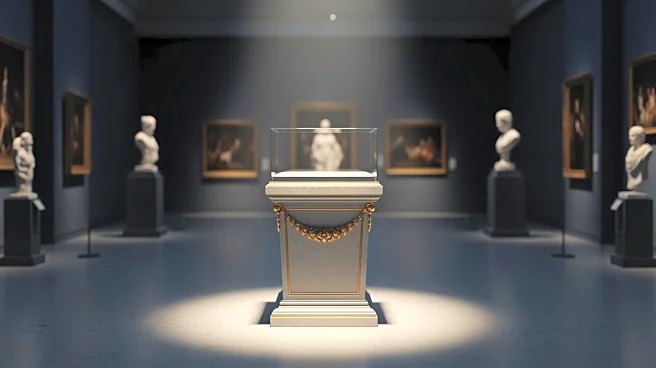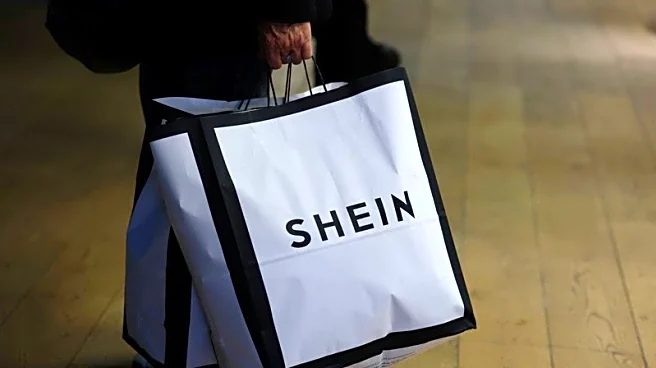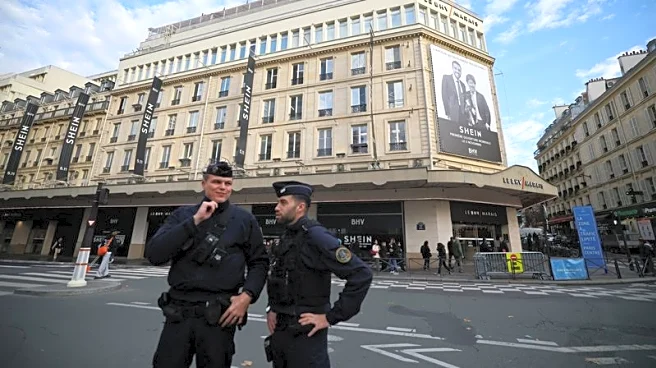What's Happening?
Four more individuals have been arrested in connection with the daring jewel heist at the Louvre Museum, which took place on October 19, 2025. The suspects, two men and two women from the Paris region,
are aged between 31 and 40. The heist involved the theft of nine pieces of jewelry, including a diamond-and-emerald necklace gifted by Napoleon to Empress Marie-Louise, and Empress Eugénie's pearl-and-diamond tiara. The stolen items, valued at $102 million, have not been recovered. The suspects are being held for questioning, with police having up to 96 hours to interrogate them. Previous arrests have been made, and charges of robbery and criminal conspiracy have been filed against other suspects.
Why It's Important?
The Louvre heist has highlighted vulnerabilities in the security systems of major cultural institutions. The theft has sparked a debate on the need for improved security measures to protect valuable artifacts. The incident has also drawn attention to the challenges faced by law enforcement in recovering stolen art, which often involves complex international networks. The arrests may provide new leads in the investigation, potentially aiding in the recovery of the stolen items and preventing future thefts. The case underscores the importance of safeguarding cultural heritage and the need for international cooperation in combating art theft.
What's Next?
Authorities are expected to intensify efforts to locate the missing jewels, which have been listed in Interpol's Stolen Works of Art database. The Louvre Museum is likely to implement additional security measures, including the installation of surveillance cameras and anti-intrusion systems, to prevent similar incidents. The museum's director has acknowledged the inadequacy of current security systems and has committed to upgrading them, although full implementation of recommended changes is not expected until 2032. The arrests may lead to further revelations about the identities and roles of those involved in the heist.
